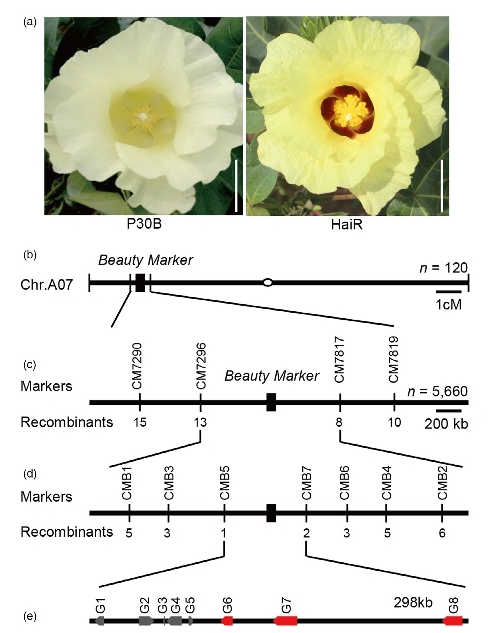Abstract:
Hybrid crop varieties have been repeatedly demonstrated to produce significantly higher yields than their parental lines; however, the low efficiency and high cost of hybrid seed production has limited the broad exploitation of heterosis for cotton production. One option for increasing the yield of hybrid seed is to improve pollination efficiency by insect pollinators. Here, we report the molecular cloning and characterization of a semidominant gene, Beauty Mark (BM), which controls purple spot formation at the base of flower petals in the cultivated tetraploid cotton species Gossypium barbadense. BM encodes an R2R3 MYB113 transcription factor, and we demonstrate that GbBM directly targets the promoter of four flavonoid biosynthesis genes to positively regulate petal spot development. Introgression of a GbBM allele into G. hirsutum by marker-assisted selection restored petal spot formation, which significantly increased the frequency of honeybee visits in G. hirsutum. Moreover, field tests confirmed that cotton seed yield was significantly improved in a three-line hybrid production system that incorporated the GbBM allele. Our study thus provides a basis for the potentially broad application of this gene in improving the long-standing problem of low seed production in elite cotton hybrid lines.
Keywords:Gossypium hirsutum;;Gossypium barbadense;;Beauty Mark;;MYB;;hybrid seed yield



